Threatened with closure nearly 10 years ago, Gareth Evans finds that the Sittingbourne & Kemsley Light Railway is bouncing back, enhancing its offering with additional attractions and locomotive projects, as well as planning its next 50 years.
Nearly 10 years ago, the Sittingbourne & Kemsley Light Railway was threatened with closure by its then Finnish-owned landlord – a fate which was to hang over it for four years. Yet the Kent narrow gauge line continues to bounce back.
It may be unmistakeably industrial; a world away from the scenic splendour of the Welsh narrow gauge railways, yet the SKLR provides families with an affordable day out, while also offering no shortage of interest to the enthusiast and casual observer alike.
Reflecting its industrial origins, the line’s rolling stock still operates on its original railway, which includes a striking half-a-mile long concrete viaduct. I last visited in 2000 and this time noted how the landfill site the railway once passed has given way to a nature reserve… and I was also delighted to find the welcome remains as warm as ever. The line’s reasonably priced tea and sausage rolls come highly recommended too.
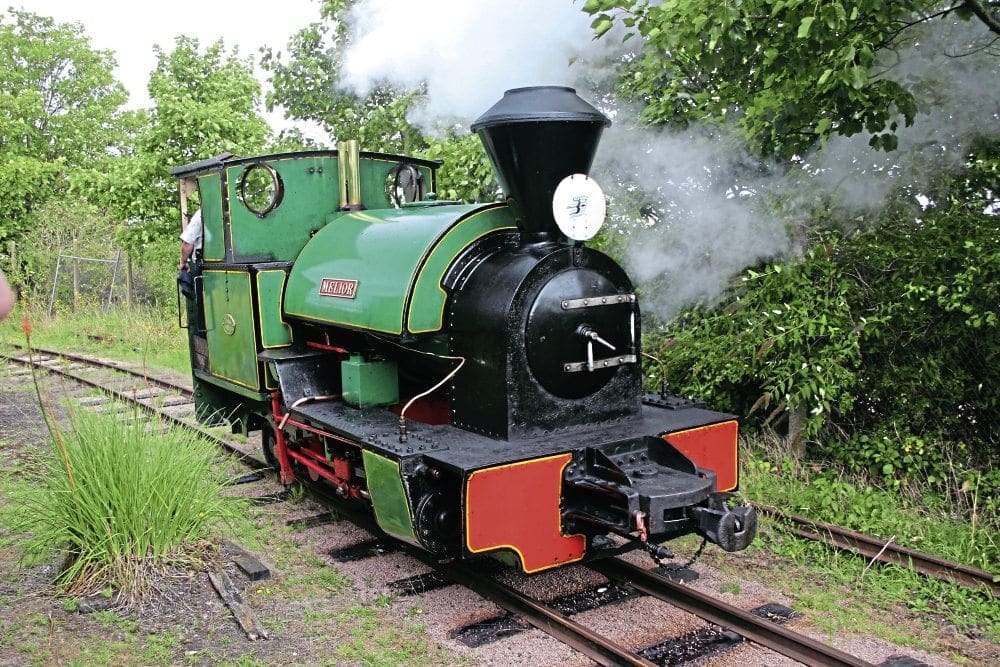
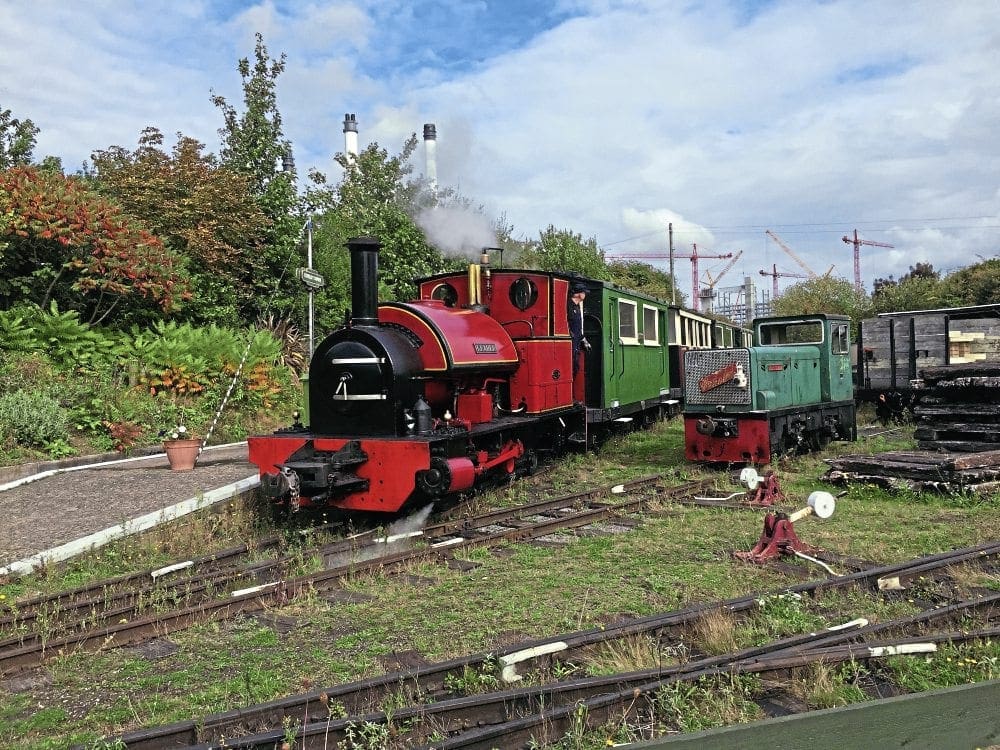
“We want to keep the cafe affordable, particularly for families,” commented Paul Best, the SKLR’s press officer. “There is a lot of deprivation in Sittingbourne. It’s essential we can continue to provide people with a day out, so they return time and again.”
Even a cursory search online reveals enthusiasm is not in short supply at the SKLR. The railway maintains a vibrant presence across the various online platforms. It’s also pleasing to report there is no shortage of young volunteers – indeed, on the day of my visit, there appeared to be a healthy all-round mix of age groups.
History
Today’s operation is the preserved southern half of the former Bowater’s Railway built to move the raw materials for paper making as well as the finished products around the mill at Sittingbourne. However, the section of line from Kemsley Down to Ridham Dock was abandoned for redevelopment of the paper mills.
Edward Lloyd, the newspaper owner and publisher, built Sittingbourne Mill in 1867 to supply his businesses with paper. The railway was originally horse drawn and was centred around the wharf on Milton Creek, Sittingbourne with lines into storage sheds and the mill.
In 1905 the first steam traction arrived in the form of two Kerr Stuart ‘Brazil’ class 0-4-2ST locomotives – Premier and Leader. The motive power fleet grew and during the system’s heyday there were 14 steam locomotives, including two fireless engines, plus a diesel and one battery electric engine.
The mill at Sittingbourne relied heavily on raw materials being brought in by barge, but Milton Creek had gradually been silting up. By 1913 this, together with the need for a greater volume of raw materials, saw plans for the building of Ridham Dock and Tramway. The new deepwater facility on the Swale estuary enabled seagoing ships to unload raw materials and load finished paper products.
While construction was hindered by the First World War, the tramway was completed by 1916 and the dock was finally finished by the end of the war. This included a viaduct which, although originally designed as a steel construction, was actually built in reinforced concrete. This viaduct is over half-a-mile long and is still in use today, but over the last 10 years more than £100,000 has had to be invested in its maintenance.
The development of the mill at Sittingbourne was restricted by the Southern Railway on one side and the creek on the other. Therefore, in 1923 a new mill was built at Kemsley, between Ridham and Sittingbourne. The railway was eventually a 24-hour a day, seven-day a week operation which maintained a passenger service for mill employees. While the ‘main line’ was 3.5 miles long, the network’s track totalled in excess of 10 miles. There was also an internal standard gauge branch off the Sheerness line.
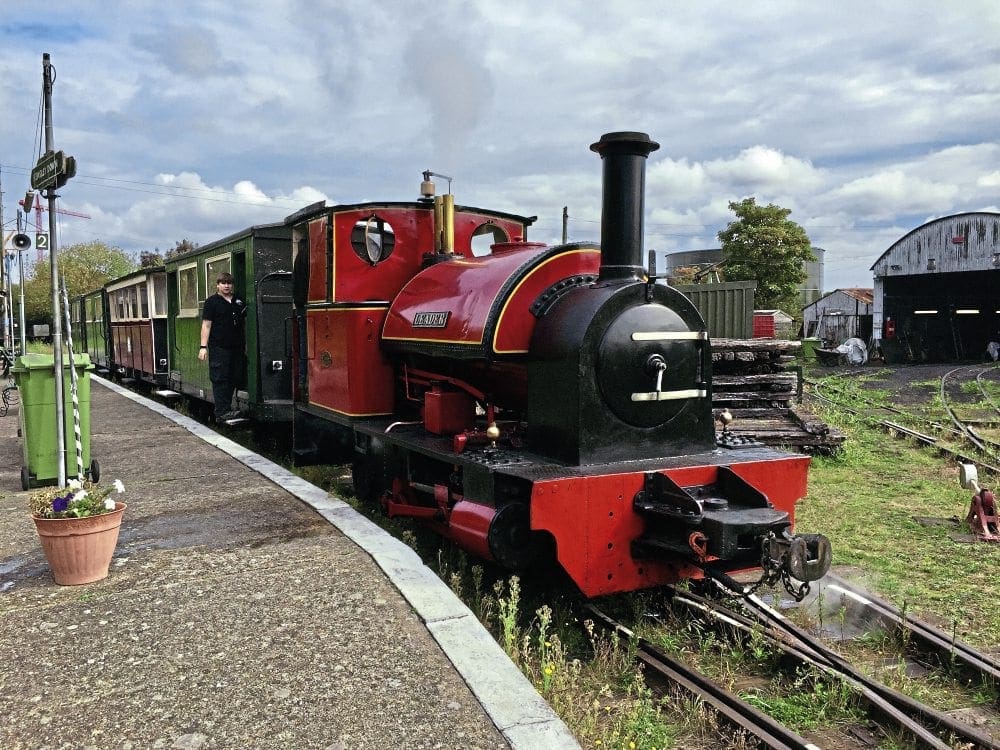
Ownership of the line changed a number of times – passing from the Lloyd family to the Berry family in 1927; before being purchased by the Bowater family in 1936. The Bowater Corporation was still in charge of the mills in 1965 when a time and motion study of internal transport found it could be carried out more efficiently using road transport. In 1969 the railway was handed over to the Locomotive Club of Great Britain’s (LCGB) Light Railway Section, which became the Sittingbourne & Kemsley Light Railway (SKLR) in 1972 – the line having re-opened two years earlier.
Bowater sold the mills in 1986. Sittingbourne Mill shut 21 years later – a Morrisons supermarket now occupies the site. In the same year (2007), the railway was forced to cease operating. Following lengthy negotiations, the then owner, M-real, agreed a 125 year lease of about a mile of the track to the SKLR. However, this stopped short of Milton Regis (Asda) Halt, making it impossible to operate a public train service.
The line
In 2010, M-Real sold the mill, the rest of the trackbed and the site of Sittingbourne Viaduct station to Essential Land. The SKLR was able to operate services from Milton Regis Halt to Kemsley Down in October 2010. Regular services recommenced in May 2011, again between Milton Regis and Kemsley Down.
The line between Sittingbourne Viaduct and Kemsley Down finally reopened on May 27, 2012. The mill at Kemsley continues to produce paper packaging to this day and is owned by D S Smith plc, which also owns the site of the SKLR station and workshops at Kemsley Down. Negotiations are taking place to agree a lease on this land. The two-mile journey takes 15 minutes. Sample fares are: Adult return £7; OAP £6; and Family £19.
Visitors tend to start their journey at Sittingbourne Viaduct station, which is located on top of an embankment, accessed via a flight of stairs. Wagons occupy one of the surviving transfer sidings, providing a flavour of this formerly busy location. Leaving Sittingbourne, the line is carried on the imposing Milton Regis viaduct, which turned 100 years old in 2015. The train travels slowly over the structure and its 118 spans and five bridges, giving a unique perspective of the area. Originally the viaduct crossed many roads and weaved between terraced housing and Milton Creek, forming this strange, curvy route out of town. Today however, passengers can see bird’s eye-like views of industrial premises along this section. The last stretch of viaduct is straight and leads onto a high embankment where the line’s only intermediate station can be found – Milton Regis (Asda) Halt. However, owing to repeated vandalism, it has been shut since late 2012.
Another straight section follows, where a pipeline can be seen running parallel with the line on the right-hand side. The pipeline used to carry high pressure steam from the power station at Kemsley Mill to Sittingbourne Mill to run the machinery – hot water and effluent would return in adjacent pipes.
After passing the household recycling centre, which is easily missed being largely screened by vegetation, the line takes a sharp left, before travelling by a pipe bridge located away from the track. After entering Milton Creek Country Park, the line then passes two more pipe bridges. The first used to cross a branch line to Burley’s Wharf on Milton Creek and the second is Burley Crossing, a former brick field line. A short straight precedes the Northern Relief Road Bridge, now called Swale Way – a great vantage point for photographers wanting to get a picture of the train passing through the countryside or with Kemsley Paper Mill as a backdrop. The line then forms a barrier between the saltwater marshes on the right and the freshwater marshes on the left and attracts various species of birds and insects. Rounding the last corner before Kemsley Down, the paper mill looms over the train to the left, crossing the other level crossing which is used for internal paper mill traffic, before arriving into the station.
Facilities include a cafe, shop, picnic area, shed yard and museum walk. The museum itself documents the history of the railway, paper making in Sittingbourne and the life of Edward Lloyd, founder of the original paper mill. The museum also contains an OO-scale model railway operated by younger members. A pedestrian gate links the station to the Saxon Shore Way, allowing walks to be enjoyed to the Swale Estuary or to Sittingbourne, via Milton Creek Country Park.
Steam engines
The seven-strong SKLR steam fleet were all built for the line – and with one exception, carry a green-based livery. A delightful trio of Kerr Stuart Brazil-class 0-4-2STs – one of which Premier (see Recent Developments) is currently being rebuilt. With its distinctive lined red livery, 1905-built Leader stands out from the SKLR steam fleet. The engine returned to action in 2012 following a 30-year rebuild and is now a regular performer.
“It’s red as it’s owned by a private consortium of members,” said Paul. Differing from the older Brazil-class engines, Melior is unusual in having modified Hackworth valve gear – the loco’s name coming from the Latin for ‘made better’. Withdrawn from traffic shortly after the line was handed over for preservation, the 1924-built engine returned to service in 1993 after a 23-year restoration – and began its current 10-year boiler ticket in 2012. Larger locomotives comprise three Bagnall Baretto class 0-6-2Ts. Too big to work in Sittingbourne Mill, these engines originally ran at Kemsley, Ridham Dock and on the main line. When the LCGB took over the railway in 1969, it was decided to retain standard designs of locomotive, so the earlier Kerr Stuart-built Baretto Superior was sold to the Whipsnade Railway.
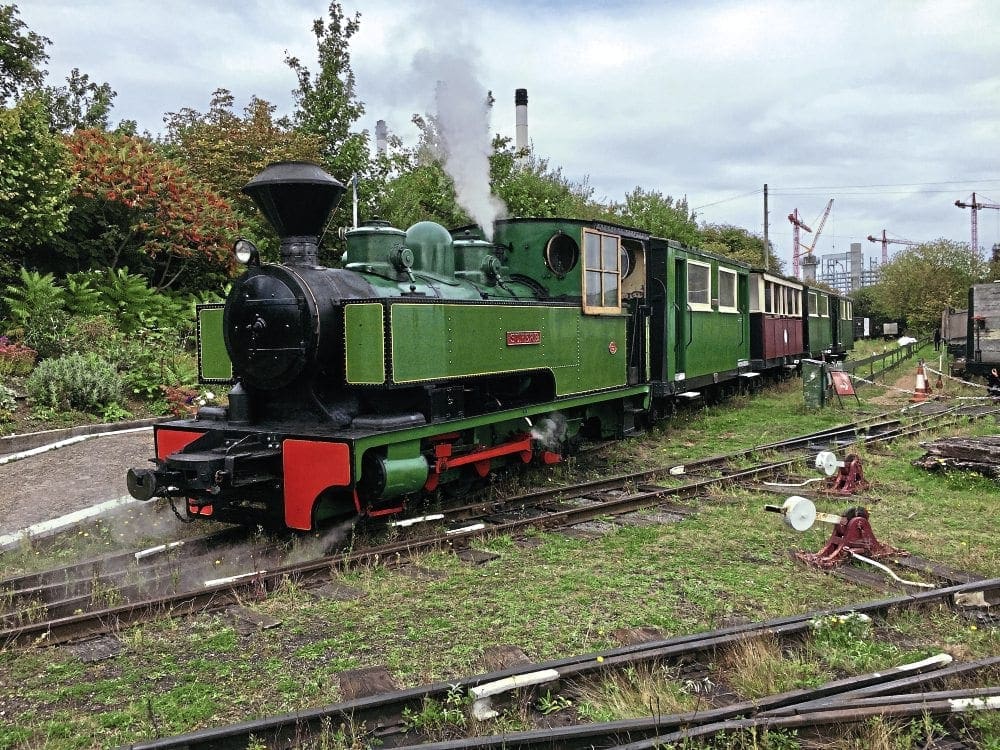
The oldest of the trio, 1932-built Alpha, has been a static exhibit since 1969. In need of a costly major overhaul, it requires a new boiler, side tanks and injectors, as well as the rebuilding of its motion. However, cosmetic restoration is progressing steadily – the task being undertaken at the back of Kemsley shed, primarily by a group of young volunteers. The cab area has been the main focus to date, with paint stripped and corroded metalwork replaced as required.
“Our younger volunteers are learning vital skills on this project,” explained Paul. “They have been so enthusiastic and they’re rightly proud of what they’ve achieved to date. In the mid-2020s, the aim is to have a major fundraising drive for its full overhaul.”
Undergoing its 10-yearly overhaul is 1934-built Triumph. Having had the honour of hauling the ceremonial ‘handover’ train in 1969, the engine has been one of the stalwarts of the fleet. The final 0-6-2T, 1940-built Superb hit the headlines in summer 2017 when it visited the Welshpool & Llanfair Railway, starring in the line’s gala weekend. The engine has been a popular member of the fleet since it returned to action in 2012 after a heavy overhaul that included boiler work and reprofiling of the wheels. After its W&L visit, the chimney now points towards Sittingbourne – like all other members of the stable.
As the UK’s sole narrow gauge fireless locomotive, the aptly named Unique was built to a standard gauge design, albeit with the wheels placed inside the frames to reduce the gauge to 2ft 6in. Charged from the mill’s high pressure steam supply, it could run for eight hours without recharging. The 1923-built Bagnall 2-4-0F was used to shunt in areas where fire risk was greatest, mainly within Kemsley Mill. Unique is destined to remain a static exhibit as there is no longer a suitable steam supply available.
Diesels
The line is also home to three diesels – one of which has spent its life at Sittingbourne. Hudson-Hunslet 4w DM Victor was new to Bowater in 1953. Having had a major overhaul, which included a rebuild of the clutch and gearbox, the work stalled for a spell however, owing to difficulty sourcing a new crankshaft. With the engine back in the frames, Victor will return to service in the coming months.
With its somewhat unusual appearance, Ruston & Hornsby 0-4-0DH Edward Lloyd was new to Nettleton Top iron ore mine, Lincolnshire in 1961. Named after the original owner of Sittingbourne Mill, the engine masquerades as ‘Ivor the Engine’ during special events related to the books by Oliver Postgate and Peter Firmin. While the engine is operational, it is due an overhaul. The most recent addition to the fleet is 1965-built Hunslet 4w DH Barton Hall, which arrived in 2004 from the W&L, having previously worked at Royal Naval Armaments Depot (RNAD) Dean Hill in Wiltshire. The engine can be used on passenger trains in an emergency. With the return of Victor, Barton Hall is set to be withdrawn for an overhaul.
Standard gauge
Not to be forgotten are the two standard gauge steam locomotives displayed at Kemsley Down – both of which are historically significant in their own right. Barclay 0-4-0F No.1 is a former Bowater machine, although the 1925-built engine spent its life at Northfleet Paper Mill. Retired in 1979, it was presented to the SKLR for preservation as it was the last steam locomotive owned and operated by Bowater anywhere in the world.
Displayed alongside No.1 is 0-4-0ST No. 3 Bear – the oldest surviving standard gauge Peckett in England. Presented to the LCGB in February 1967 by its former owner, Colville of Lanarkshire, it arrived at the SKLR in 1971 from the Scottish Railway Preservation Society. Ownership was transferred to the SKLR in 1996.
Carriages and wagons
A feature of the Bowater railway was its 24-hour passenger service, taking mill and dock employees to work and home again. The coaches were constructed on the chassis of some of the line’s existing Butterley-built bogie pulp wagons in 1957, replacing an earlier, more basic design. Today, the vehicles form the mainstay of the line’s carriages – supplemented by an open and semi-open carriage converted from Butterley pulp wagons in the preservation era. The SKLR also has four Cravens-built former Chattenden & Upnor (C&U) Railway coaches, which came to the SKLR in 1978, via the W&L.
“They don’t see as much use as they once did – the Bowater stock tends to be the first choice. The C&U stock is used as the second set during special events,” explained Paul.
“One (No. 204) is still a frame, being part way through a rebuild. We lost our master wood craftsman in 2017 – we’re now down to just three carriage and wagon volunteers.”
The line retains 14 rugged steel bogie Butterley-built former pulp carriers – examples of which can today be found in modified form at the Talyllyn, Whipsnade, Vale of Rheidol and W&L railways. Other surviving former pulp bogie wagons include Bagnall-built examples, a mix of both short and long wheelbase, dating from the 1930s. An interesting collection of wagons can be found on display in the museum sidings at Kemsley Down. Information boards explain the significance of each vehicle. They include a 1930-built Bagnall bogie coal box wagon which originally carried fuel between the dock and mills; a bogie rubbish carrier; a 1955 Butterley-built four-wheeled tipper that once carried china clay; and a four-wheeled Kerr Stuart-built side tipping truck, which holds the accolade as the line’s oldest wagon, dating from 1906.
Other wagons include a solitary ex RNAD four-wheeled flat and a pair of four-wheeled ex London Transport tippers used in the construction of the Victoria Line.
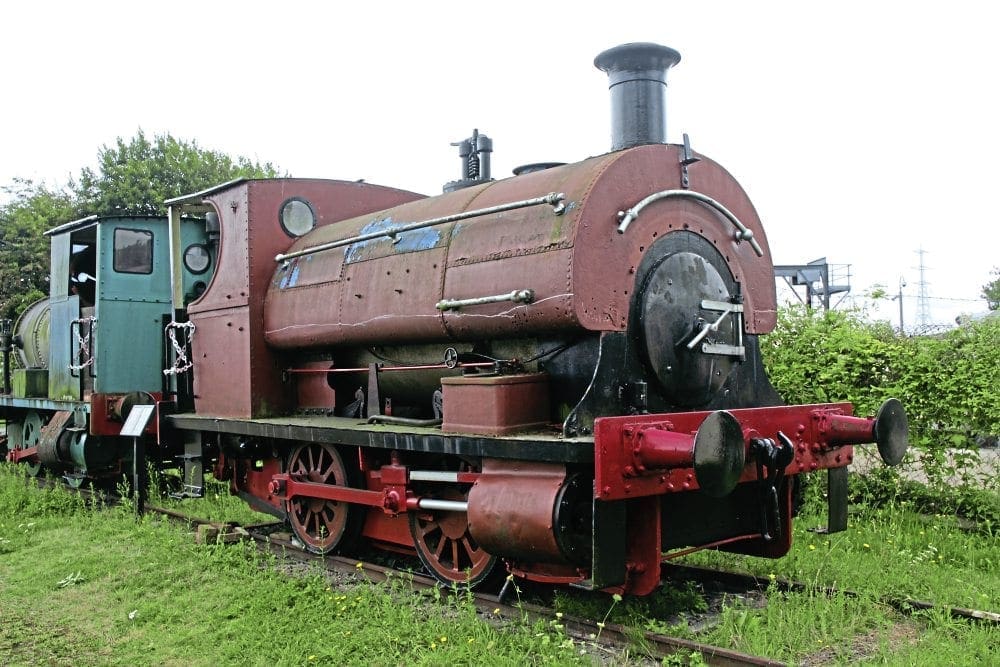
The oldest surviving standard gauge Peckett steam locomotive in England,
0-4-0ST No. 3 Bear, is displayed alongside fireless former Bowater No. 1 at Kemsley Down. GARETH EVANS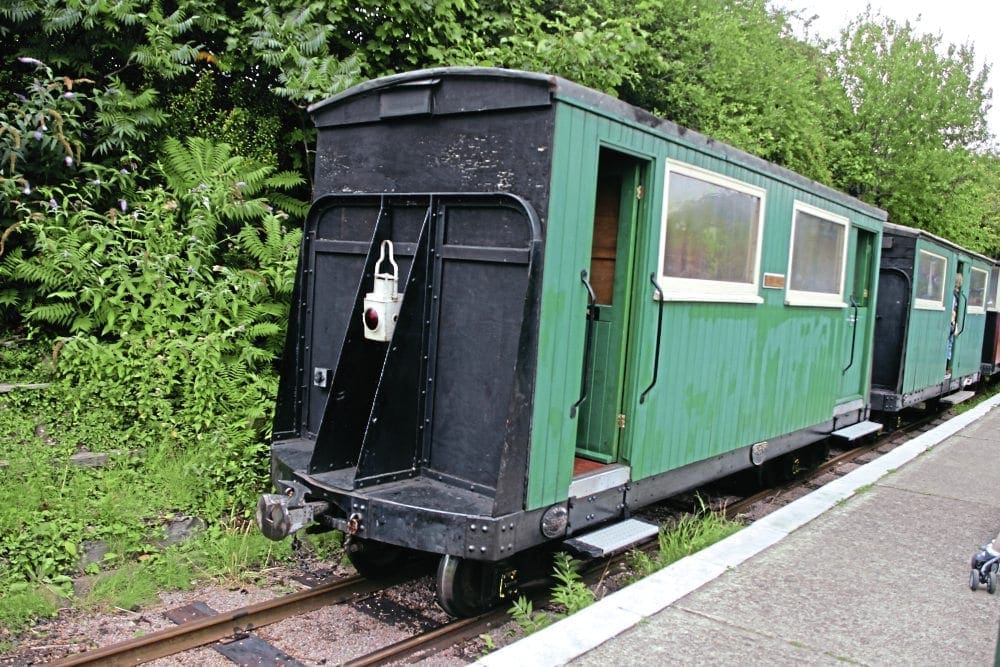
Visitors can sample a ride in original Bowater’s Railway carriages, which once carried mill and dock employees to work and home again.
Recent developments
The main focus on the locomotive front is the reconstruction of Premier to ‘as built’ 1905 condition.
“The boiler is at the North Norfolk Railway’s Weybourne works,” said Paul.
“The new firebox has been installed and the task of fitting tubes has commenced. We’re grateful to our supporters who’ve been sponsoring a boiler stay at £25 each as part of our Premier Stay appeal.
“Back at Kemsley, where the rest of the engine is being worked on by our volunteers, reassembly has commenced – including painting and the fitment of a new cab floor.
“We’ve got more fundraising to do, but it’s coming on a treat so far. Premier will emerge in a lovely dark green – it will be different to the rest. The tank and wheelsets have already been painted. The tank alone has had 15 coats of paint. Premier has been out of action since the 1990s – we’re hoping to have it ready for 2019.”
A highlight in the summer of 2017 was the inaugural visit of an SKLR engine to the W&L.
“We were delighted when we were invited to take Superb to be reunited with Bowater stablemate Monarch. The W&L staff and volunteers were amazing. Kevin Edwins, driver and engineer at Whipsnade kindly lent us a part to enable us to complete the fitment of vacuum brakes. It was a great example of cooperation between the UK’s main 2ft 6inch gauge lines – and long may it continue.”
On that note, the lorry which returned Superb brought a spare pair of C&U bogies to the SKLR in return for a pair of Butterley bogies. The SKLR has also understood the need for stakeholder engagement locally – and it benefits from a supportive local authority too.
“We enjoy a great relationship with Asda,” said Paul. “It kindly donated blankets to keep passengers warm during the Santa trains. It has also given us the opportunity to have a promotional display stand in the shop.”
A recent addition to the museum is a display about First World War mill workers who saw active service.
“Liz Fuller, SKLR chairman, worked with Sittingbourne Heritage Museum and other groups. All of them were traced – only one had died in the conflict,” explained Paul.
“Another new attraction opened in 2017 was the 5in gauge railway at Kemsley, which operates along the creekside.
“We also established our garden railway, which runs in front of the museum. The project has been boosted by the donation of labour and materials from Bunnings (part of the same group as Homebase) DIY store in Sittingbourne.
“We’re also grateful to volunteers from Network Rail last year, who helped construct a ‘pop up’ temporary station to serve the Art in the Park event in the country park.”
On that note, Paul said: “We’re keen to promote the opportunity for our visitors to walk to Kemsley Down from Sittingbourne station, enjoy refreshments and then catch a train back. It’s an interesting half-hour walk along the creek banks, via sites of old shipbreakers and brickworks. It’s a fascinating marked heritage trail. More details can be found on the Milton Creek Country Park website.”
Paul said visitor numbers were “challenging” in 2017 due to the weather. He added: “We considered going paperless, but have decided that timetable leaflets have a vital role in promoting our railway. We’re also actively working to encourage group visits, especially coach parties. With our rich industrial archaeology, we can offer a day out with a difference.”
Future
Asked about the future, Paul spoke candidly of the challenges, as well as the opportunities: “A challenge is to recruit more volunteers. We’re fortunate to have a pool of keen young people – we welcome their enthusiasm.
“In addition to assisting the locomotive department, some of our younger members love the garden railway and others enjoy the opportunity of becoming an assistant stationmaster or ticket inspector.
“It’s great experience for their careers. The hardest thing is getting them to commit to rosters.
“More generally, we find permanent way is the hardest to recruit for. We need people to learn skills.
“Echoing a pattern seen across the preservation movement, we have younger and older volunteers, but we then tend to lose them when they’re in their 30s and 40s. We understand people are busy, so we’re asking them to consider sparing us a day a month.”
Another challenge is the ongoing maintenance of the viaduct. Paul added: “It is 100 years old. For the last two years, we’ve had to spend £20,000 on one arch alone due to repeated HGV damage – in addition to the £60,000 we’ve invested in the structure over last three years.”
Work is now underway on a 50-year plan for the railway. “We’ve been taking a hard look at what we’ve got and what we would like to have,” enthused Paul.
“Plans are in place for improved facilities at Sittingbourne, including a new platform, station building and disabled access. We would also like to reopen Milton Halt (Asda). However, it’s been vandalised so badly that it’s unlikely to be used for the foreseeable future. We need volunteers with civil engineering skills, who can help with undertaking soil samples, as well as managing a project of that scale.
“We have several landmarks to celebrate, so we’re planning to mark them in style. They include the 50 year anniversary of the handover in 2019; the 50th anniversary of passenger trains in 2020; and then in 2022, we hope to mark the 50th anniversary of the establishment of the SKLR as an organisation.”


